- Administrator
- Albums and Singles
 I have traditionally been a sucker for J Mascis—his songs with Dinosaur Jr capitalize on my favorite aspects of rock music, overflowing with hooks, distortion and blistering guitar solos. After two surprisingly excellent albums with the original Dinosaur Jr line-up, Mascis' first studio album under his own name asks listeners to take out their earplugs for a scaled-back, primarily acoustic effort.
I have traditionally been a sucker for J Mascis—his songs with Dinosaur Jr capitalize on my favorite aspects of rock music, overflowing with hooks, distortion and blistering guitar solos. After two surprisingly excellent albums with the original Dinosaur Jr line-up, Mascis' first studio album under his own name asks listeners to take out their earplugs for a scaled-back, primarily acoustic effort.
J Mascis' songwriting remains distinctively his own on Several Shades of Why, his first solo album recorded in a proper studio. On Martin + Me and Live at CBGB's, Mascis played it rather safe, revisiting Dinosaur Jr material in a solo acoustic setting and throwing in additional cover songs; here, Mascis turns in a set of ten brand new, original songs. He also forgoes Dinosaur Jr band mates Lou Barlow and Murph for a rotating cast of collaborators, among them Sophie Trudeau (A Silver Mt. Zion/Godspeed You! Black Emperor), Pall Jenkins (The Black Heart Procession), Matt Valentine, and Kurt Vile (whose excellent new album, Smoke Ring for My Halo, I also covered this week).
On first listen, Mascis' knack for writing immediately classic-sounding hooks is intact—this album is enjoyable, at least initially, because Mascis knows how to turn out a pleasant, familiar-sounding tune. As with any musician with a recognizable style, though, Mascis struggles walking a fine line: finding a new spin on his formula versus retreading his old habits. On Several Shades of Why, Mascis leans toward the latter, not diverging noticeably from his songwriting methods; rather, he scales back the instrumentation—dull, acoustic arrangements with dragging tempos and less memorable hooks than his recent Dinosaur Jr material. As a result, Several Shades of Why is a chore to listen to while it's playing and a forgettable listen once it's over.
I get the impression that had Mascis not switched off his effects pedals and cranked down the volume, these might as well be Dinosaur Jr songs. Unfortunately, there's no fuzzy distortion for the tunes to hide behind, and Mascis' guitar solos are spread thinly; when his guitar does strike on occasion (as on "Where Are You"), it feel less like a searing-hot cauldron of water than a familiar childhood blanket. Mascis is good at what he does, but he does not engage me in a stripped-down, acoustic setting that spotlights the predictability of his songwriting. Can we assemble Mascis' wall of Fender amps and crank up the distortion for another Dinosaur Jr album, please?
Samples:
Read More
- Administrator
- Albums and Singles
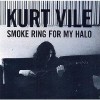 This young singer-songwriter takes inspiration from Dinosaur Jr frontman J Mascis, among other folks, and will be opening his US tour this spring. In a refreshing twist, Vile has released the better album this year, outshining Mascis on his latest album (and most stripped-down to date).
This young singer-songwriter takes inspiration from Dinosaur Jr frontman J Mascis, among other folks, and will be opening his US tour this spring. In a refreshing twist, Vile has released the better album this year, outshining Mascis on his latest album (and most stripped-down to date).
Admittedly, perhaps part of the reason I find Kurt Vile's Smoke Ring for My Halo so much more vital and engaging than Mascis' Several Shades of Why (which I also covered this week) is that I am approaching Vile's work for the first time. This is his fourth collection of songs, but the first one I've given a close ear—oftentimes, I have found that sense of unfamiliar discovery can elevate music to a higher plane. Regardless, this is a strong album from Vile—ten spacious, endearing songs carved out of the American singer/songwriter tradition by a young man filled with talent, hopefully with a fruitful career yet ahead of him.
The songwriting on Smoke Ring for My Halo is more varied, and less overtly familiar, than on Mascis' album. Vile switches off between deft acoustic finger-picking ("Baby's Arms"), classic guitar rock ("Puppet to the Man") and stoned, sprawled-out jams ("Society Is My Friend") with ease, keeping me on my toes. The instrumentation on the majority of these songs is sparse, the production always intimate; each strum of Vile's guitar and slide of his fingers across the frets is captured like a firefly in a jar. Vile's lyrics sound casually tossed-off in an endearing way, never over-thought, and are complementary to his guitar playing, capturing the same sense of weary resignation that Mascis has perfected over the years.
Listened to side-by-side, Smoke Ring for My Halo is not worlds away from Several Shades of Why—like Mascis, Vile has a pleasant, smoky depth to his voice and an ability to convey his emotions through his distinctive guitar playing. The difference, then, is that Vile has made an album that feels like a spotlight on his creativity and talents, not a downplay of his strengths (as on Mascis' album). If allowed only one of these albums on my shelf, I would choose Smoke Ring for My Halo—it has proven itself a comfortable, low-key soundtrack as winter turns to spring.
Samples:
Read More
- Administrator
- Albums and Singles
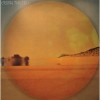 Eternal Tapestry's album on Thrill Jockey is their first widely available recording, coming on the heels of a slew of limited-press LP and CD-r releases the last couple years. It's a charming, low-key improvisational rock record that I found a bit of a "comfort food" listen, playing exactly to my tastes. While it doesn't strike me as especially innovative or mind-blowing among its peers, I find it a satisfying album, easy to get lost in start-to-finish each time I put it on.
Eternal Tapestry's album on Thrill Jockey is their first widely available recording, coming on the heels of a slew of limited-press LP and CD-r releases the last couple years. It's a charming, low-key improvisational rock record that I found a bit of a "comfort food" listen, playing exactly to my tastes. While it doesn't strike me as especially innovative or mind-blowing among its peers, I find it a satisfying album, easy to get lost in start-to-finish each time I put it on.
Beyond the 4th Door is an album of patient, sprawling psychedelia. The songs flow seamlessly into one another and have a live-recorded feel to them, like a group of friends rented out an inexpensive studio for a couple hours, threw back a 12-pack of brews, strapped on their instruments and hit 'Record' for a night of casual, off-the-cuff playing. That's not to say the album is formless or uninteresting; the players involved have honed their skills with Jackie-O Motherfucker, Heavy Winged, Cloaks, and similar-minded bands, and their experience pays off in creating a cohesive listen without any moments that make me reach for the all-too-handy 'Skip' button.
The five songs on Beyond the 4th Door—to the extent that pieces of music without traditional verse-chorus structures and intelligible vocals are worth calling "songs"—are extended, improvised guitar workouts backed by a structured, evenly-paced rhythm section that lets the guitar interplay do most of the heavy lifting. The songs unfold and reveal their nuances in a way that reminds me of Popol Vuh, allowing instruments such as cymbals and horns to enter and leave the mix subtly, without disrupting the laid-back, cosmic tones that are always present.
"Galactic Derelict," at the album's midpoint, is when Eternal Tapestry trade the subtle, droning explorations of the first two songs for a fuller sound recalling Bardo Pond circa Lapsed—washes of heady, psychedelic distortion and feedback combined with dual, overlapping guitar lines. After "Galactic Derelict," the album reverts back to melodic, slightly bluesy guitar lines and relaxed tempos, permitting the album end in the same subtle way it began. Beyond the 4th Door is subtle, blissed-out psychedelia played with casual confidence.
Samples:
Read More
 Eternal Tapestry's album on Thrill Jockey is their first widely available recording, coming on the heels of a slew of limited-press LP and CD-r releases the last couple years. It's a charming, low-key improvisational rock record that I found a bit of a "comfort food" listen, playing exactly to my tastes. While it doesn't strike me as especially innovative or mind-blowing among its peers, I find it a satisfying album, easy to get lost in start-to-finish each time I put it on.
Eternal Tapestry's album on Thrill Jockey is their first widely available recording, coming on the heels of a slew of limited-press LP and CD-r releases the last couple years. It's a charming, low-key improvisational rock record that I found a bit of a "comfort food" listen, playing exactly to my tastes. While it doesn't strike me as especially innovative or mind-blowing among its peers, I find it a satisfying album, easy to get lost in start-to-finish each time I put it on.
- Administrator
- Albums and Singles
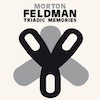 Although a similar CD was released by Sub Rosa 20 years ago, this is not a reissue but a re-recording, an amendment to that 1990 release. Here, Jean-Luc Fafchamps revisits one of Morton Feldman's most popular pieces and casts a new light on it. The themes, which Feldman had developed throughout his life as a composer, are all consolidated into one perfect piece of music. He picks up the delicate beauty of the piece in a different way to his previous recording, a truer rendition of the score but by no means negating the original release.
Although a similar CD was released by Sub Rosa 20 years ago, this is not a reissue but a re-recording, an amendment to that 1990 release. Here, Jean-Luc Fafchamps revisits one of Morton Feldman's most popular pieces and casts a new light on it. The themes, which Feldman had developed throughout his life as a composer, are all consolidated into one perfect piece of music. He picks up the delicate beauty of the piece in a different way to his previous recording, a truer rendition of the score but by no means negating the original release.
 
Especially towards the end of his life, Feldman had a keen interest in rugs made by nomadic groups from around the world. Recently, I had the chance to view some of his collection as part of a larger exhibition on Feldman and his personal and creative relationship with modern art. The design of these rugs, much like the paintings he loved so much, informed his own composition techniques. Feldman is well known for his graphic notation in place of traditional music notation and the rugs also influenced the way he conveyed music on paper; the score of Flute and Orchestra is directly comparable to a 19th century prayer rug from Turkey.
However, there are other relationships between his music and these rugs and Triadic Memories highlights at least one of these relationships. In many of the rugs Feldman collected (or at least those on display at the Irish Museum of Modern Art), the repetitive patterns that made up the designs seemed to warp and stretch (a "crippled symmetry" in Feldman's own words). In the same way, Triadic Memories is built up around repetitions of notes which change over time. The second or third notes in a three-note motif begin to elongate in comparison to the first or second appearance of the motif much like the designs on the rugs showed distortions in comparison to each other.
Repetitions are not just the main hallmark of this piece but the reason for this new recording entirely. Fafchamps originally released a version of Triadic Memories on Sub Rosa in 1990 which was based on a 1987 publication of the score. In that particular edition, there were directions over the notes to be repeated but they did not specify how many times the notes were to be repeated in each case so Fafchamps repeated the measures once and moved on to the next one. He later learned that the different measures had different numbers of repetitions associated with them (clarified on a later publication of the score which he works from here) and felt the need to re-record the piece.
This is a wonderful thing as this current recording is a beautiful (if rather fast in comparison to some of the other recordings by other pianists) version of Triadic Memories. The subtle shifts in the length of the notes and their exact pitch (what sounds like a repetition of an earlier measure is actually a semitone higher later on) give the impression of patterns reflected on water, the ripples breaking up the image while retaining its character perfectly. With this stretching of the music, Feldman's piece plays with the sensation of time. This is typical of Feldman's approach throughout his career as he used pauses and silences like his contemporaries in the visual arts used blank canvas and monochrome spaces to fix the various elements of their painting in to a composition. The notes and chords of Triadic Memories are suspended in the air like the forms of one of Franz Kline's black and white paintings or indeed any of Mark Rothko's later works. In particular, the bleeding of Rothko's colors into each other is directly comparable to Feldman’s stretching of the notes. Fafchamps masterfully conveys these ideas through his playing; his fingers brushing the keys rather than pressing them.
As aforementioned, the presence of this "corrected" recording of Triadic Memories does not replace a "faulty" version (Fafchamps himself recognizes this in the liner notes). Instead, this is purely an alternative view of the piece much like the longer renditions also out there (such as Marilyn Nonken's which pushes the piece to over 90 minutes). Like most modern composers, Feldman allowed for variation in a way that contemporary interpretations of classical music have usually stifled. This stretching of the composition, let alone the notes, again comes back to the Oriental rugs and their own wear and tear from use.
samples:
 
Read More

 I have always been a sucker for J Mascis—his songs with Dinosaur Jr overflow with hooks, distortion and blistering guitar solos. Mascis' first studio album under his own name, Several Shades of Why, is a primarily acoustic effort and, unfortunately, a forgettable listen. In a refreshing twist, Kurt Vile, who takes inspiration from Mascis and will be opening his US tour this spring, outshines him on his latest album (and most stripped-down to date), Smoke Ring for My Halo.
I have always been a sucker for J Mascis—his songs with Dinosaur Jr overflow with hooks, distortion and blistering guitar solos. Mascis' first studio album under his own name, Several Shades of Why, is a primarily acoustic effort and, unfortunately, a forgettable listen. In a refreshing twist, Kurt Vile, who takes inspiration from Mascis and will be opening his US tour this spring, outshines him on his latest album (and most stripped-down to date), Smoke Ring for My Halo.
- Administrator
- Albums and Singles
 This surreal and wildly ambitious project began quite humbly in 1988 when Greif found an old three-LP audio book of Lewis Carroll's Alice in Wonderland at a thrift store and began idly warping and enhancing it.  Sometime afterward, he submitted an unrelated cassette to Staalplaat with some of those experiments on the back side and they offered to release the Alice material instead of the intended work. Originally released only as a series of five limited-edition albums in the early '90s, this sprawling epic quickly became Greif's most well-known and enduring work.  Appropriately, it has now been reissued as a rather striking box set for the second time.
This surreal and wildly ambitious project began quite humbly in 1988 when Greif found an old three-LP audio book of Lewis Carroll's Alice in Wonderland at a thrift store and began idly warping and enhancing it.  Sometime afterward, he submitted an unrelated cassette to Staalplaat with some of those experiments on the back side and they offered to release the Alice material instead of the intended work. Originally released only as a series of five limited-edition albums in the early '90s, this sprawling epic quickly became Greif's most well-known and enduring work.  Appropriately, it has now been reissued as a rather striking box set for the second time.
Randy Grief began making music in the 1970s, but he first came into relative prominence with the launch of his Swinging Axe Productions label in 1983, which released early works by Controlled Bleeding and Merzbow.  That early stint in America's very lonely noise cassette underground left a lasting impression on his aesthetic over the years, despite the fact that he soon began finding inspiration in literature, exotic field recordings, and musique concrète.  As a result, the stylistic stew here is a very eclectic one, blending radio serials, tape loop cut-ups, avant garde classical cacophony, clanking early industrial textures, horror movie soundtracks, and brooding ambient over the course of six mind-bending hours (and not especially seamlessly). Despite that clumsiness (and, of course, the technological limitations inherent in making computer-based music two decades ago), Alice in Wonderland is a spectacular achievement.
Greif faced a number of unusual hurdles with this project.  The first, naturally, is the sheer scope of the material: not many musicians have the imagination, attention-span, and patience necessary to make a coherent six-hour-long soundscape with very little reliance on repetition.  In fact, Randy himself has stated that the project probably never would have been finished if he hadn't committed to it in advance (the whole thing took him 5 years to finish).  The second difficulty is that Greif found the tone of the narration to be too even for his liking, so he needed to force some dynamism into it without sacrificing intelligibility, flow, and coherence.  The third (and most substantial) problem is that Carroll's story was already perfectly fine without some experimental musician from LA messing around with it.  Improving upon something that is already complete (and a literary classic besides) is no simple feat: Greif had to find a way to add music without detracting or distracting from the text while also avoiding the peril of being utterly eclipsed by it.  The route that Randy wisely chose was to texturally highlight and emphasize the darker side that was already there.
While it is very easy to pick out some rather dated textures, bombastic moments, or bloated individual pieces over the five CDs, the whole is often quite successful. Greif exercises a great deal of tact, largely allowing the narration to continue unmolested and seldom plunging into lengthy instrumental stretches.  That linearly unfolding thread prevents the album from ever losing much momentum or being derailed by much in the way of self-indulgence.  Also, that same stream of words provides much grist for Grief's accompaniment: most of the creative heavy lifting on the album involves the skillful and aggressive manipulation of the actors' voices, surrounding the narration with disjointed phonemes, pitch-shifting, panning, backwards voices, and sundry other neat tricks.  On the rare occasions when Randy does attack the actual narrative flow, he generally does it to supremely hallucinatory effect, making Alice and her friends sound submerged, fragmented, or narcotically slowed-down when it suits the story.
As for the music underneath it all, Greif is all over the place.  The shimmering and droning ambient passages still sound fairly contemporary today, but some of the harsher or more rhythmic pieces can be a bit jarring or too rooted in late '80s industrial/noise music for my liking: plodding drum machines with lots of reverb, very artificial-sounding synthesizers, etc.  However, it all perversely works somehow, as the resulting dissonance and disorientation serve the themes of the story quite well. Also, Greif definitely succeeded in giving the story a compelling dynamic arc, as his clanging rhythms and garish sound colors bring a great deal of animation and tension to the more action-packed parts of the tale, which in turn heightens the impact of the woozier, more drugged-sounding passages.
Before hearing this album, I had never thought that the story of Alice in Wonderland held much interest for me as an adult.  However, Greif has done a truly remarkable job in emphasizing its more unsettling, creepy, and Kafkaesque elements in a thoroughly compelling and imaginative way.  Despite its occasional missteps and some ravaging from time, the cumulative power of this album is massive.  In fact, it is difficult to imagine experiencing Alice in installments over the course of several years as its original listeners did–a boxed set is the only logical format for this release.  Or course, six solid of hours of mechanized psychedelia is certainly exhausting, but so is spending a week in a foreign county: total immersion seems like the only way to fully experience a work this singular and consuming Many people have called this album a classic over the years and I don't disagree, but this is something more than a great album: this is a complete, self-enclosed sound world.
Samples:
 
 
Read More
- Administrator
- Albums and Singles
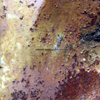 As much as I enjoyed Pedestrian Deposit's first "post-noise" effort (2009's Austere), I didn't think it was nearly on the same level as what Jon Borges and Shannon Kennedy were capable of delivering live.  That disparity has now been conclusively remedied, as this expanded reissue of a 2010 Housecraft cassette captures the duo at their mesmerizing, crackling, and eerie peak.
As much as I enjoyed Pedestrian Deposit's first "post-noise" effort (2009's Austere), I didn't think it was nearly on the same level as what Jon Borges and Shannon Kennedy were capable of delivering live.  That disparity has now been conclusively remedied, as this expanded reissue of a 2010 Housecraft cassette captures the duo at their mesmerizing, crackling, and eerie peak.
Pedestrian Deposit's evolution since Kennedy's arrival has been quite a rapid and dramatic one, which is no surprise: adding a second person to a former one-man operation is bound to have a big impact.  Particularly if that one man is best-known as a harsh noise artist and the new member is a cellist.  Remarkably, however, there did not seem to be any period of awkwardness or growing pain, as Austere debuted the more restrained Pedestrian Deposit sound beautifully.
Still, it was already a snapshot of very different band by the time it was released, as Jon and Shannon's progression has been much faster than their recorded work can keep up with.  It is hard to articulate exactly what has changed since the recording of that album and these four songs (recorded between 2009 and 2010), but it seems like PD have grown a bit more adept at exploiting the full potential of Shannon's cello work.  For instance, there is actually a melancholy plucked melody at the beginning of "A Blessing."  Such excursions are the exception rather than the rule though: East Fork/North Fork is still very much a hazy, drone-centric, and forlorn-sounding album. Nevertheless, a bit more warmth and color have definitely crept into the picture this time around.  Not much, of course, but enough to imbue the music with a little more character and humanity than I expected.  It makes a big difference, as the fleeting glimpses of life make the surrounding haunted, creaking emptiness seem significantly more affecting and unsettling.
Of course, a lot of the album's success is also due to the fact that Borges keeps getting better and more assured with each passing year.  While there is one welcome and well-timed blast of stuttering static in "Strife/Meridian" that reminds me of Pedestrian Deposit's more violent past, Jon has made the transition from explosive noise artist to architect of slow-burning ominousness seem effortless.  Throughout these four pieces, slow-moving bowed tones actively quiver, swell, and dissipate amidst often little more than a bed of hiss or low-hum.  This is a lot of open space here, which makes the cello sound especially lonely and endangered.  Also, I was especially struck by the attention to textural detail throughout the album, such as the low rhythmic swells, hums, crunches, and scrapes that call to mind distant machinery.  There is a definite sense of place, even if it is a rather foreboding one.  That dark atmosphere is further deepened by the fact that these pieces are not at all prone to repetition or stasis–they gradually unfold, which means that something always seems to be on the verge of happening.  
East Fork/North Fork makes me feel like I am alone in the ruins of a deserted town…or perhaps not alone (in a bad way).  It is never quite clear whether the pervading mood is desolation or quiet dread, which is the kind of tense ambiguity I like.  This might be the best album that Jon Borges has released yet.
Samples:
 
Read More
- Administrator
- Albums and Singles
 Two musicians are jointly credited for this album: Jamie Smith, the sound sculptor behind 2009's buzz band du jour, the xx, and Gil Scott-Heron, the legendary spoken word poet and musician who should require no introduction. This project, a full-length collection of remixes that draws primarily from Scott-Heron's first recording in eons, 2010's triumphant I'm New Here, has been touted as a collaborative effort. A cursory listen, however, makes one thing immediately clear—this is Jamie's show.
Two musicians are jointly credited for this album: Jamie Smith, the sound sculptor behind 2009's buzz band du jour, the xx, and Gil Scott-Heron, the legendary spoken word poet and musician who should require no introduction. This project, a full-length collection of remixes that draws primarily from Scott-Heron's first recording in eons, 2010's triumphant I'm New Here, has been touted as a collaborative effort. A cursory listen, however, makes one thing immediately clear—this is Jamie's show.
 
I had doubts as to whether We're New Here could stand on its own, given Jamie's limited resume. He contributed a great deal to the xx's debut two years ago—perfect, minimal pop that seemed fully formed from the start, nuanced and emotionally vulnerable. My question, however, was whether the xx were a one-trick pony, in possession of a sound so singular that it lacked a means of expansion. We're New Here is an emphatic rebuttal, showing Jamie in full command of a range of sounds—and while that bodes well for the xx and their longevity, this album demands to be heard in the meantime.
Throughout We're New Here, Jamie weaves Scott-Heron's weathered vocals from I'm New Here into his low-key, introspective world of UK dub, garage, dance and electronic music. Scott-Heron is gleefully chopped up, looped, rearranged and scattered around in order to supplement Jamie's soundscapes—vocals are placed carefully to suit the music, never the inverse. Jamie doesn't limit his samples to source material on I'm New Here, either—he digs deep, going back to Scott-Heron's classic 1970s work as well as samples of Baby Washington and Gloria Gaynor's enduring "Casanova Brown," among others.
I'm New Here was a hazy, succinct suite of interconnected songs and sketches—some serving as focal points, others as brief transitional pieces reliant on context. It was disjointed and rough, a harrowing listen, its gritty sounds reflecting the words of a broken man. Jamie's cut-and-paste job on We're New Here is a smart recontextualization of its source material: if I'm New Here was a jigsaw of sorts, this album strips away the dark vibes and reassembles the pieces into a more youthful, celebratory musical palette.
It is commendable that We're New Here plays not as its own important work of art, but as a humble love letter to Scott-Heron's legacy and influence. The bulk of Scott-Heron's recorded work is essential listening, and this album comes across as a respectful tribute to a legend, not a quick cash-in or an attempt to raise Jamie's profile in between albums from the xx. (Note the top billing given to Scott-Heron on—let's be honest—someone else's album.) Fortunately, aside from paying its respects, We're New Here is an impressive musical statement in its own right, a presentation of Jamie's heretofore-unseen breadth as a musician and producer.
We're New Here is a joy to listen to—a playful, diverse album with character (and bass) to spare. By combining Gil Scott-Heron's ageless vocals with his own late-night dreamscapes rooted in UK garage and dub, Jamie Smith has crafted a strong, singular collection of music that succeeds as a nod to Scott-Heron's genius—and, perhaps more importantly, a display of Jamie's budding talent.
Samples:
Read More
- Administrator
- Albums and Singles
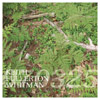
There's a strong pairing on this album, with Whitman's modular electronic improvisations on one side being balanced out nicely by Shiflet's more spacious, droning textures on the other. There is also a sense of commonality to be heard, which unifies the two sides of this LP, making it feel more like a collaboration and less like a split release.
Whitman's half, "070325" opens with sparse, deep reverberating tones that slowly get heavier and build in complexity, with any sort of pensive discipline upset by modular synth chirps and echoing pauses.Sawtooth waves are shaped into horror movie scrapes and erratic stop/start blasts that keep a sense of discomfort strong.
With the unpredictable sputtering noises, the piece starts to feel like it encroaches on free jazz territory, with square waves and low frequency oscillators mimicking horns and woodwinds.At times what could pass for a didgeridoo appears with a low, almost rhythmic throb, but is frequently interrupted by synth outbursts that could be emanating for a mad scientist’s lair, all dynamic and drawn out until the performance ends with a loping engine idle.
On the flip of this heavy slab of vinyl, Mike Shiflet uses less identifiable tools in his performance of "080409," conjuring up an accordion-like drone that is simple on the surface, but is a microcosm of sound below.The structure changes slowly, but noticeably, so it never becomes too frozen, nor does it jump around harshly.Amid the expansive waves of sound and sputtering, erratic noises there are subtle hints of music buried, but never allowed to be fully heard.
Eventually the mix opens up, reigning in the bulk of the sound to leave subtle, warm tones in a spacious piece of tonal bliss.The peace is short lived, when a low buzzing swarm and what sounds like bass strings rattling appear, pushing the track into more creaky and scary territory.It all builds to a crescendo where I think I heard some actual guitar playing in there somewhere before coming to a swift end.
I enjoy the juxtaposition of the two sides, with Whitman's crazed analog outbursts nicely mediated by Shiflet's more pensive, expansive walls of noise.The two sides almost bleed into each other though, as both artists use elements of the other’s style, and it always fits in quite well.While many split releases sound like each artist simply doing their own thing, here there seems some sort of unspoken, psychic unity between the two that leads to a stronger whole.
samples:
- Keith Fullerton Whitman - "070325"
- Mike Shiflet - "080409" (Excerpt 1)
- Mike Shiflet - "080409" (Excerpt 2)
 
Read More
- Administrator
- Albums and Singles
 This is probably one of the most nauseating, disgusting sounding recordings I own, which isn't a surprise given the artists involved. It has a sound that drips with blood, saliva and phlegm and is more than a visceral experience from both of these two modern aktionists.
This is probably one of the most nauseating, disgusting sounding recordings I own, which isn't a surprise given the artists involved. It has a sound that drips with blood, saliva and phlegm and is more than a visceral experience from both of these two modern aktionists.
Blossoming Noise/Sharkbite Tapes
Consisting of live recordings from 2005 (a single performance from Phillips, three separate ones by Yeldham), both sides of this LP are immaculately presented sonically, with the sparse artwork and virgin white vinyl belying the disgusting mess hidden within the grooves.
Australia's favorite son and dualpLOVER head Justice Yeldham contributes three different shorter performances combined into a single side-long track called "Keep Daddy Safe" that captures sonically what his instrument looks like visually.His instrument is a contact mic’d piece of glass that he covers in KY Jelly and rubs his face on, violently, and blood often ends up an additional part of the mix.
The wet, sloppy undulating noise that comes forth is drenched in overdrive and metallic echoes, occasionally blasting out into almost synth-like textures.The second performance has a more cavernous, hollow sound with flatulent, guttural noises and spacey, sonorous outputs of tone, all thrown together in a sloppy mess.The combination of liquid gushes and distorted buzzes sounds like someone pissing on the third rail, before the performance obviously ends with glass shattering and applause.
Phillips, who is part of the Schimpfluch-Gruppe collective that also includes Rudolf Eb.er (Runzelstirn & Gurgelstock) and Joke Lanz (Sudden Infant), has his own brand of absurdist influenced performance art that is the clear descendant of the Viennese Aktionists, with the "Breaking Tests" of Gunter Brus seemingly as a starting point.
Phillips' performance, "Freedom Isn't Free" begins simple enough, with deep, carefully measured breathing that is barely louder than the crowd noise, paired with a slow electric pulse.Eventually the sound of his heartbeat becomes louder and faster, with the breathing transitioning into hyperventilation.
Any semblance of "normal" behavior is tossed out when his vocalisms twist into dog-like freakouts, choking, gagging, and pained screams, all of which are layered and looped together.Eventually the pieces come together into a heavy wall of noise, layers of squelches and occasional breaks to tense, unpleasant ambience punctuated by labored breathing that comes to a sudden, abrupt end that could almost have been Phillips losing consciousness, given the physical intensity of his performance.
There is this overall feeling of viscera and filth all over the album that makes it undeniably unpleasant, but like a messy car accident, it just makes it all the more attractive.This is two great sides of noise, but not anything pleasant to hear after a big meal.
samples:
- Justice Yeldham - "Keep Daddy Safe" (Excerpt 1)
- Justice Yeldham - "Keep Daddy Safe" (Excerpt 2)
- Dave Phillips - "Freedom Isn't Free"
 
Read More


